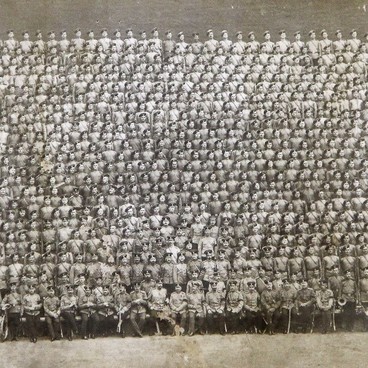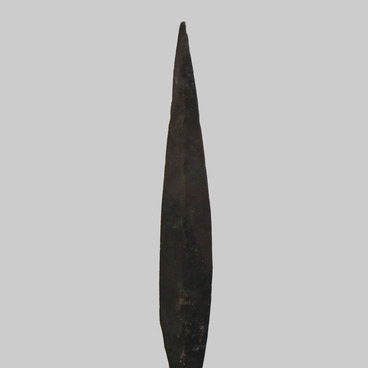The veil is a cloth wrap, which covers the discos and the chalice with the Holy Gifts. The tradition of using veils during worshiping originated at the dawn of Christianity. Then services were often held in the open air, and consecrated ‘burses’ (finished cuts of cloth) performed practical functions and protected the Holy Sacraments from bugs, sun and dust.
Discos — a dish on a stand of a special shape, symbolizing the creche in which the baby Jesus was put at birth. Another meaning of the subject is that Church is a support for faith. A priest places prosphora particles on a dish during the Preface, the first part of the Liturgy of the Byzantine Christian rite.
Chalice — a bowl with a tall leg and a wide base for wine, which during the service is transformed into the Blood of Christ. The vessel is often made of precious metals and decorated with semi-precious stones. The chalice is a symbol of the one that Jesus offered to his disciples at the Last Supper.
In ancient times, vessels were covered only with small plates. In 5th century in Church services began to use big covers, which are called ‘Aër.’ It performs a symbolic purpose and covers small veils after the Preface. In the 12th century there was a tradition to decorate liturgical sets with rich embroidery.
‘Aër’, stored in the I.D. Voronin United Museum of Local History of the Republic of Mordovia (I.D. Voronin NMLHRM), is not quite usual in iconography. The quadrangular board depicts two compositions: " The lamb of God’ and “Calvary”. This is the only element of the liturgical set known to historians with such plots.
At the top of the nearly square veil full-length angels are embroidered. In their hands they hold rhipidions - images of cherubims in a circle on a long handle, which from ancient times were used as an element of worship when performing the sacrament of Holy Communion. Under the rhipidions is the Infant Christ, his fingers are folded in a two-fingered sign.
The divine child rests in the bowl under the asterisk — the church plate symbolizing the star of Bethlehem. Under the base of the bowl — the Calvary with a spear, a cane and the head of Adam. The central part of the cover is trimmed with a border of gray silk, the edges are sewn with metallic braid, which experts date back to the XIX century. This design is very unusual and there are no analogues among the known liturgical objects of this plan. Liner with white cotton fabric was added later.
Embroidery is made with silk, gold and silver threads. For the personal master, light buff-grey silk was used the landscape is made of gold and silver. The folds on the robes of the angels are highlighted in black.
Embroidered inscriptions are made on the Aër:
— above the angels heads “АГ[Г]ЛИ” “Г[С]ДНИ”;
— over the rhipidions: “херувимы”;
— above the Christ: “IИС” “ХС”;
— under the bowl: “ЦРЬ” “СЛВЫ”;
— near the Cross: “Iис”, “хс”; at the spear and cane: “КАПИЕ”, “ТРОСТЬ”;
— under the second crossbar of the cross: “НИ” “КА”; “М Л Р Б” (“место лобное рай бысть”), “Г Г” (“The Calgary Mountain”), “А Г” (“Totenkopf”).
Embroidery on the monument is typical for the technique of the second half of the 17th century, but there are also unusual elements-the arrangement of different types of seams on the vestments of angels, designed to create a sense of volumetric robes.
Inscriptions specifics — spelling of Christ’s name with two letters ‘I’ — show that this item was made after Patriarch Nikon’s reforms of 1653. The two-fingered sign of the cross made by the Infant God’s right hand could be probably explained by a non-critical use of a certain pre-Nikon standard, what helps in dating. It can be even specified that the item was created between 1653 and 1667 — the period when making the sign of the cross with two fingers and old rituals became subject to final ‘punishments’ and curses (lifted only in 1971).
Discos — a dish on a stand of a special shape, symbolizing the creche in which the baby Jesus was put at birth. Another meaning of the subject is that Church is a support for faith. A priest places prosphora particles on a dish during the Preface, the first part of the Liturgy of the Byzantine Christian rite.
Chalice — a bowl with a tall leg and a wide base for wine, which during the service is transformed into the Blood of Christ. The vessel is often made of precious metals and decorated with semi-precious stones. The chalice is a symbol of the one that Jesus offered to his disciples at the Last Supper.
In ancient times, vessels were covered only with small plates. In 5th century in Church services began to use big covers, which are called ‘Aër.’ It performs a symbolic purpose and covers small veils after the Preface. In the 12th century there was a tradition to decorate liturgical sets with rich embroidery.
‘Aër’, stored in the I.D. Voronin United Museum of Local History of the Republic of Mordovia (I.D. Voronin NMLHRM), is not quite usual in iconography. The quadrangular board depicts two compositions: " The lamb of God’ and “Calvary”. This is the only element of the liturgical set known to historians with such plots.
At the top of the nearly square veil full-length angels are embroidered. In their hands they hold rhipidions - images of cherubims in a circle on a long handle, which from ancient times were used as an element of worship when performing the sacrament of Holy Communion. Under the rhipidions is the Infant Christ, his fingers are folded in a two-fingered sign.
The divine child rests in the bowl under the asterisk — the church plate symbolizing the star of Bethlehem. Under the base of the bowl — the Calvary with a spear, a cane and the head of Adam. The central part of the cover is trimmed with a border of gray silk, the edges are sewn with metallic braid, which experts date back to the XIX century. This design is very unusual and there are no analogues among the known liturgical objects of this plan. Liner with white cotton fabric was added later.
Embroidery is made with silk, gold and silver threads. For the personal master, light buff-grey silk was used the landscape is made of gold and silver. The folds on the robes of the angels are highlighted in black.
Embroidered inscriptions are made on the Aër:
— above the angels heads “АГ[Г]ЛИ” “Г[С]ДНИ”;
— over the rhipidions: “херувимы”;
— above the Christ: “IИС” “ХС”;
— under the bowl: “ЦРЬ” “СЛВЫ”;
— near the Cross: “Iис”, “хс”; at the spear and cane: “КАПИЕ”, “ТРОСТЬ”;
— under the second crossbar of the cross: “НИ” “КА”; “М Л Р Б” (“место лобное рай бысть”), “Г Г” (“The Calgary Mountain”), “А Г” (“Totenkopf”).
Embroidery on the monument is typical for the technique of the second half of the 17th century, but there are also unusual elements-the arrangement of different types of seams on the vestments of angels, designed to create a sense of volumetric robes.
Inscriptions specifics — spelling of Christ’s name with two letters ‘I’ — show that this item was made after Patriarch Nikon’s reforms of 1653. The two-fingered sign of the cross made by the Infant God’s right hand could be probably explained by a non-critical use of a certain pre-Nikon standard, what helps in dating. It can be even specified that the item was created between 1653 and 1667 — the period when making the sign of the cross with two fingers and old rituals became subject to final ‘punishments’ and curses (lifted only in 1971).

